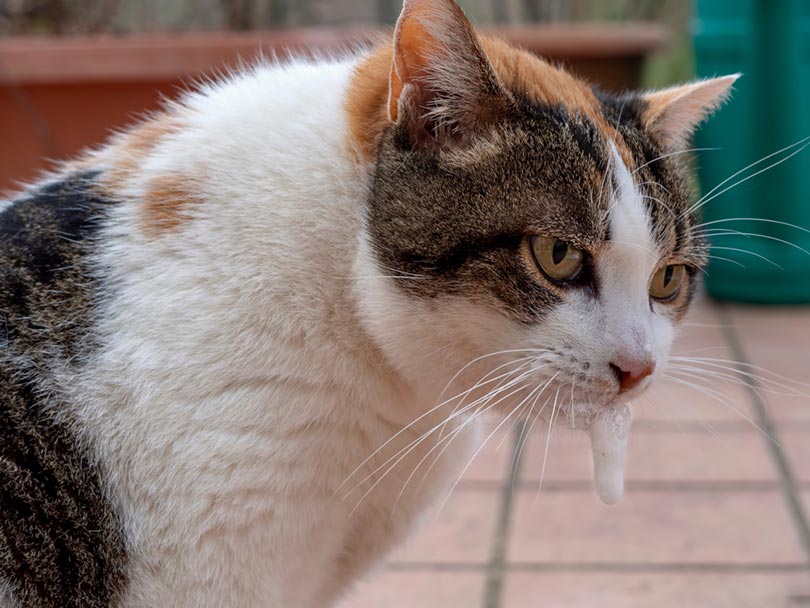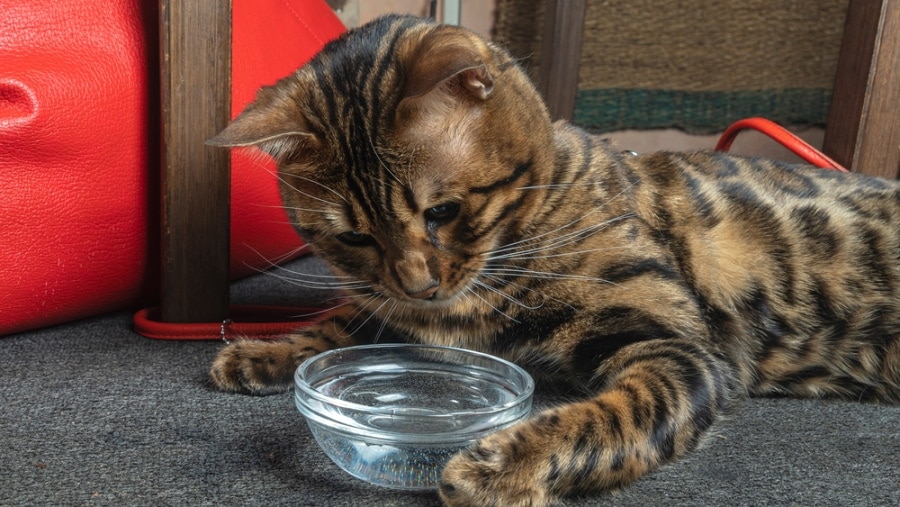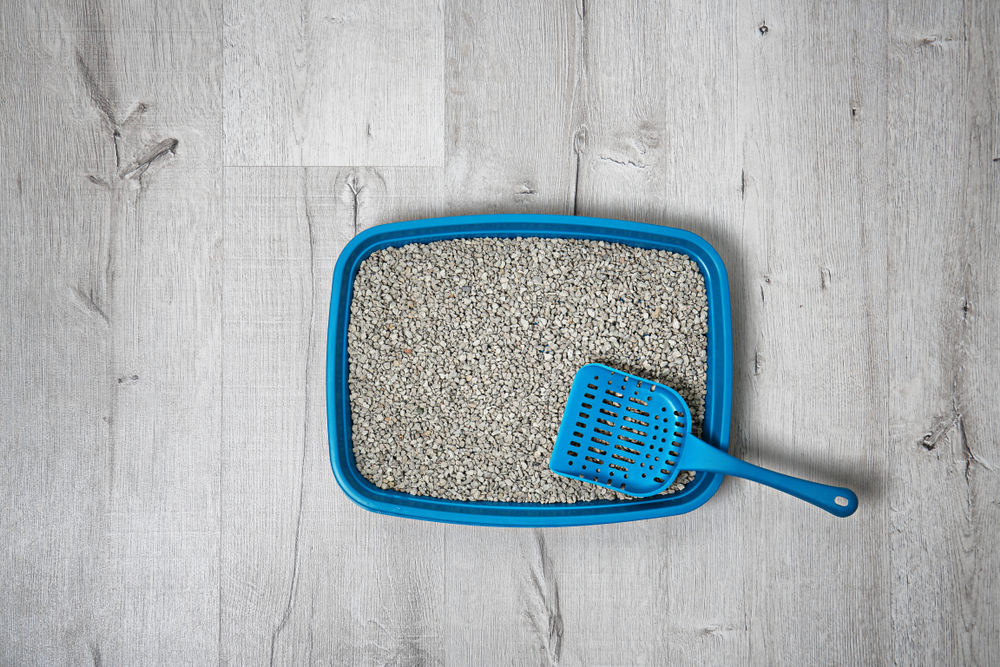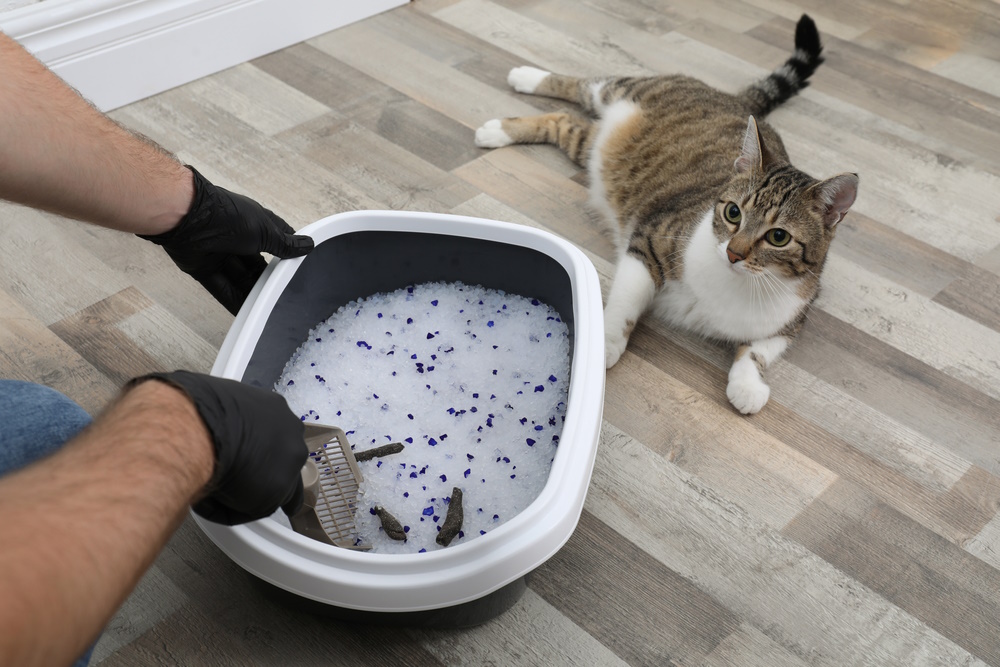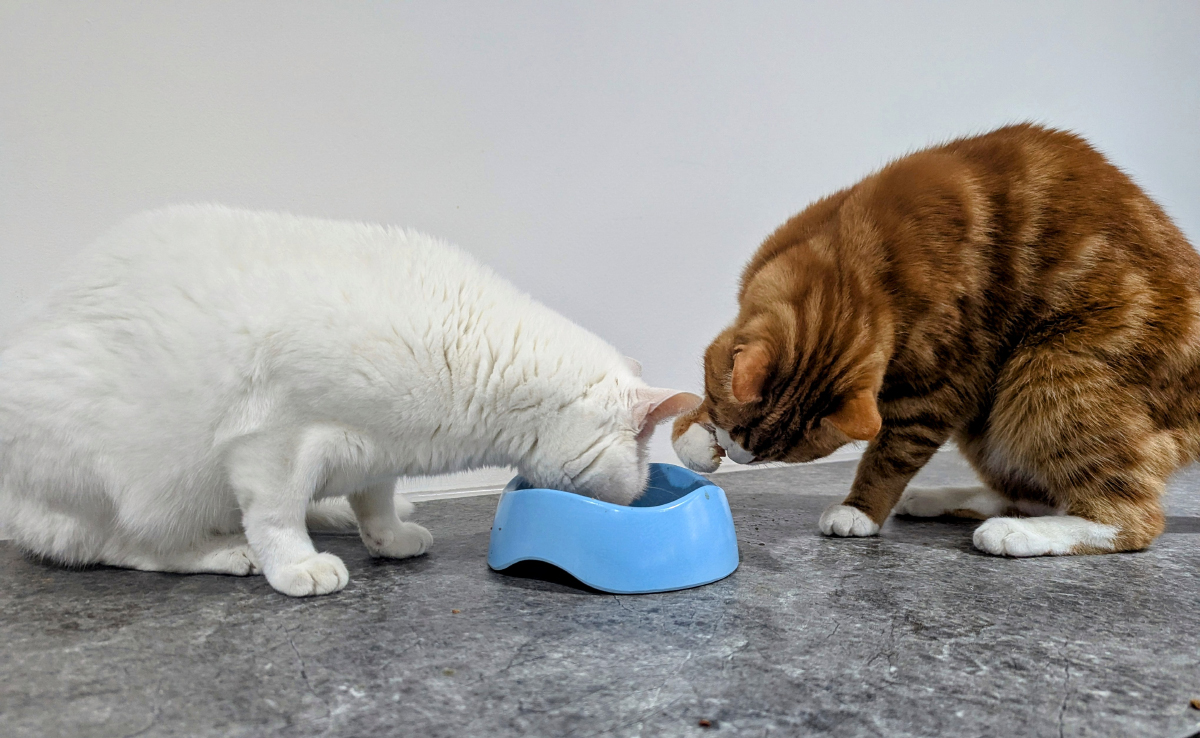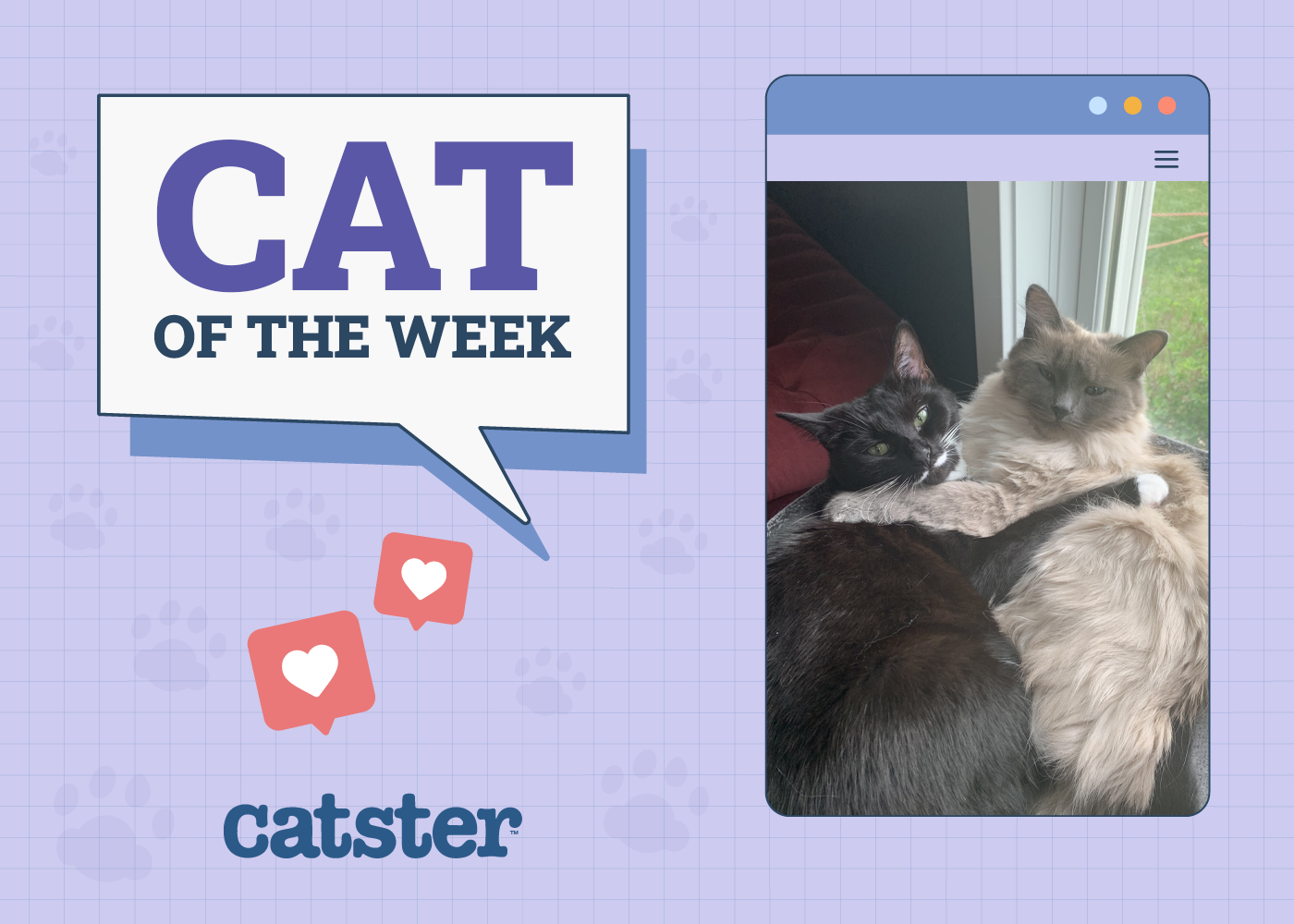Click to Skip Ahead
Cats vomit for several reasons. As unpleasant as it sounds, the color and consistency of your cat’s vomit may give you and your veterinarian a clue as to the reasons why. What if your cat is throwing up white foam? The reason behind a cat throwing up white foam is mostly related to stomach issues your cat might be having. Continue reading to learn about the eight likely reasons for a cat throwing up white foam.

The 8 Reasons For a Cat Throwing Up White Foam
1. An Empty Stomach
Your cat may be vomiting white foam because their stomach is empty. Sometimes, an empty stomach may be enough to cause nausea and vomiting. The stomach will continually produce acid, whether or not it contains food. Therefore, if it’s been an extended period since your cat ate, they may vomit white foam because they are nauseous.
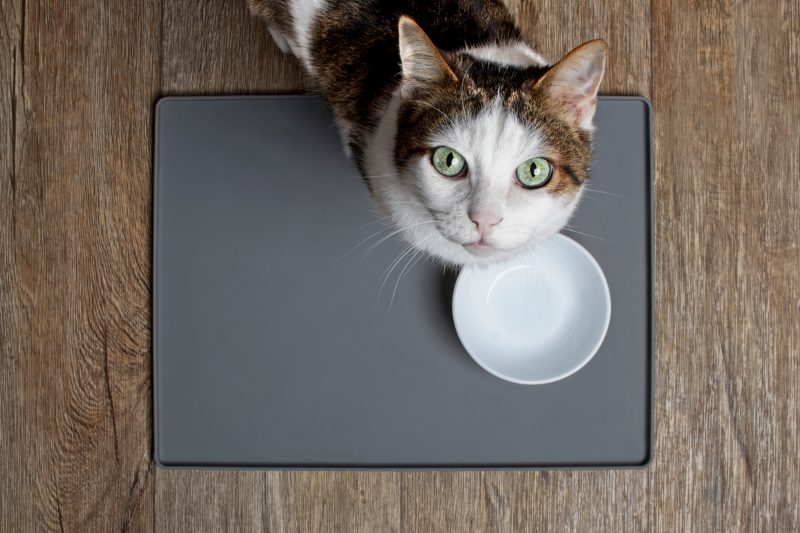
2. Attempt to Vomit a Hairball
If your cat is prone to hairballs, they may try to vomit up the hairball and be unsuccessful—only puking up white foam. If your cat is continually retching, but nothing is coming up, a hairball may be stuck in their esophagus. If your cat has long hair, over-grooms, or has a housemate that your cat likes to groom, they may be prone to getting hairballs.
- Looking for a pet-friendly solution for cleaning vomit? Check out our top products here.
3. Parasites
Cats and kittens can be prone to getting gastrointestinal parasites. Cats who are outdoor only, indoor/outdoor, not on consistent flea prevention, or were recently strays are most likely to be affected.
Most parasites are spread through contact and ingestion of infected feces. When numerous cats share the same outdoor dirt patch, sandbox, or common area, they will come in contact with infected feces more frequently. Still, other cats may become infected by ingesting fleas and developing tapeworms.
Depending on the type of parasite and where it is in its life cycle, it can affect your cat’s stomach. This can cause nausea and vomiting.
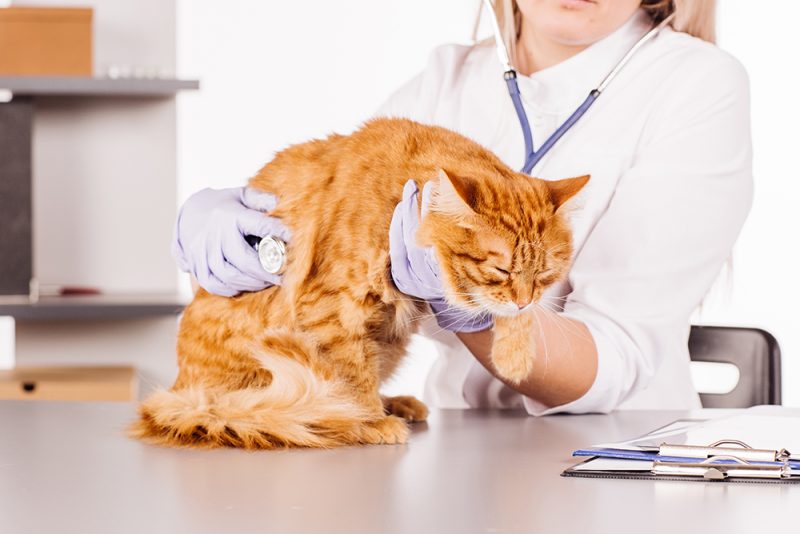
4. Gastrointestinal (GI) Obstruction
If your cat is prone to eating abnormal objects, there is a possibility that they can become stuck somewhere along the intestinal tract, possibly in the stomach or small intestine. This can occur if your cat eats string, dental floss, or a large hairball!
The longer the object is stuck, the more likely the vomit will be malodorous and appear green or brown. However, in the beginning, vomiting profuse amounts of white foam may be an indication to bring your cat to their veterinarian.
5. Pancreatitis
Pancreatitis is the inflammation of the pancreas. This condition occurs for several reasons, but unfortunately, we don’t always know why. Cats also get pancreatitis because of other underlying diseases, such as kidney disease and diabetes.
Pancreatitis can sometimes go undetected. Other times, it may cause nausea, vomiting, anorexia, diarrhea, and abdominal pain. If you notice that your cat is vomiting white foam, doesn’t want to eat, is lethargic, and has other health problems, we recommend you contact your veterinarian. Your veterinarian may want to do tests to determine if your cat has developed pancreatitis.
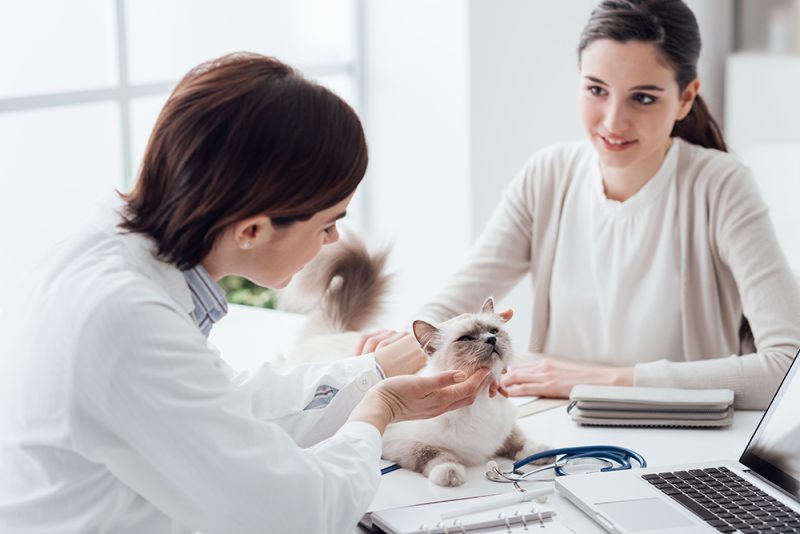
6. Secondary Gastrointestinal (GI) Signs
Often, veterinarians ascribe causes of vomiting to primary GI vs. secondary GI. Primary GI causes can be any of those listed above, in addition to others we did not discuss. They include diseases that primarily affect the GI tract.
Secondary GI signs affect the GI tract due to another organ or disease process. For example, cats with renal failure often experience nausea and vomiting. While the stomach and intestinal tract are not the source of the disease, it is secondarily affected by kidney disease.
Other secondary causes can include liver disease, bladder obstruction, hyperthyroidism, pain, diabetes, and stress. These diseases are often unrelated to the GI tract and can cause severe nausea and anorexia, which can then lead to a cat vomiting white foam.
7. IBD or Inflammatory Bowel Disease.
Some cats develop IBD, or inflammatory bowel disease, at some point in their life. This is a condition where the lining of the intestines becomes thickened and inflamed. It may cause abnormal contractions of the intestines, diarrhea, nausea, weight loss, and vomiting. Once this occurs, cats may not want to eat, causing an empty stomach and worsening vomiting.
If your cat seems to have frequent episodes of vomiting, diarrhea, and anorexia or is losing weight despite eating, it may be worth speaking to your veterinarian. Some cats with IBD are put on special diets that help with their nausea and vomiting.

If you need to speak with a vet but can’t get to one, head over to PangoVet. It’s an online service where you can talk to a vet online and get the personalized advice you need for your pet — all at an affordable price!
Still, other cats must be on high doses of steroids and immunosuppressive drugs to control their abnormal signs. Your veterinarian may recommend several tests to determine if IBD is the cause of your cat’s vomiting.
8. Your Cat Isn’t Vomiting but Coughing Up White Foam
Occasionally, owners may think their cat is vomiting when, in fact, they’re coughing so hard it causes them to retch and vomit at the end. This is referred to as a terminal retch. Think about the last time you had pneumonia or bronchitis and may have started to cough so hard and frequently that you ended up making yourself sick from the force of coughing.
This can also occur with cats. They may not be vomiting but coughing up white foam. We frequently see this with pneumonia and various types of cancer. If you are unsure if your cat is vomiting or coughing, you can film the event to show your veterinarian when you bring your cat in for evaluation. If your cat is coughing, they should be seen by a veterinarian as soon as possible.

Cat Vomit Color Chart
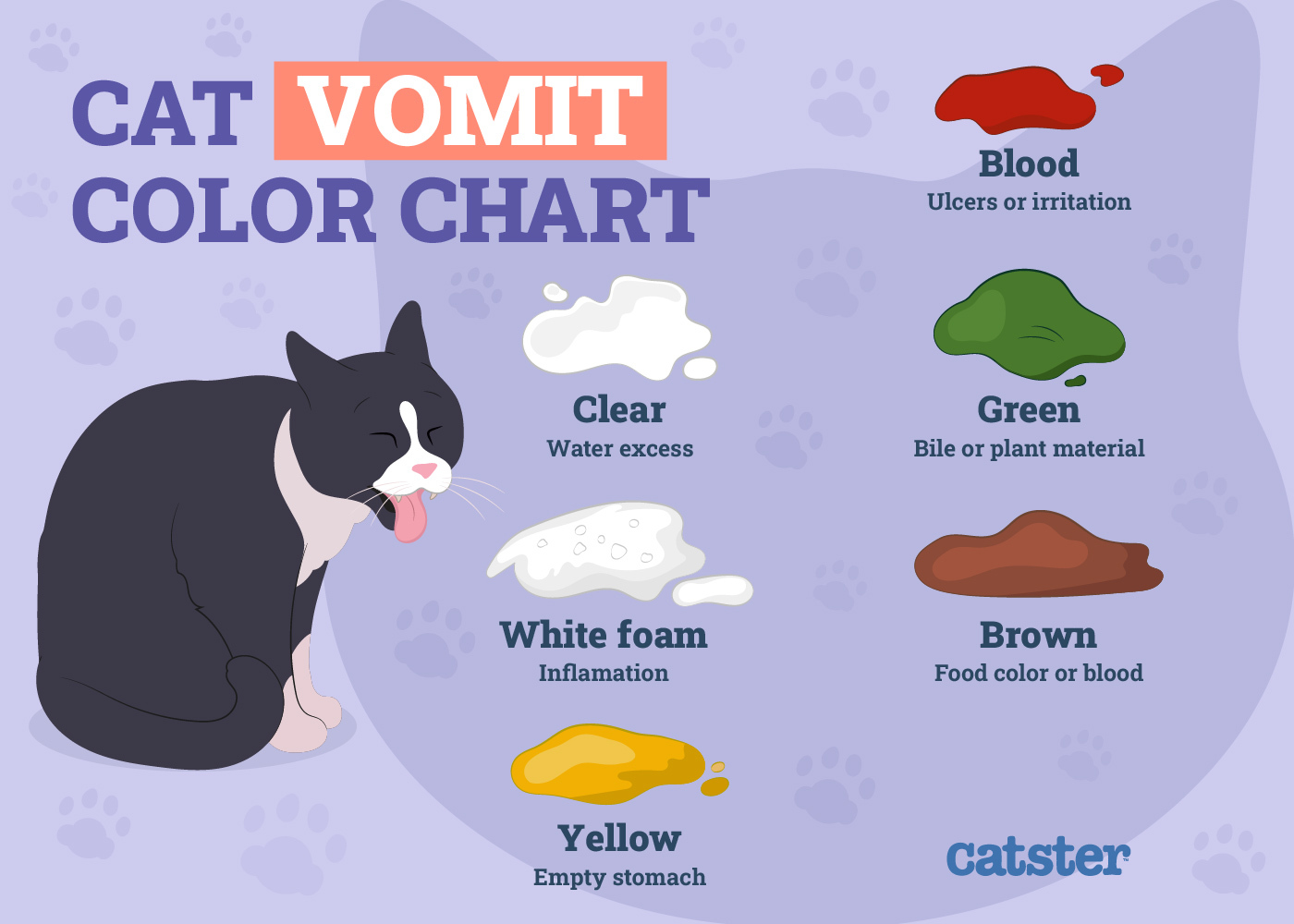

Conclusion
As you can see, there are several reasons why your cat may be throwing up white foam. Sometimes, it’s because of the intestinal tract, and other times, the intestinal tract is secondarily affected. If your cat only vomits white foam a few times but is otherwise eating, drinking, pooping, and acting normal, you can probably monitor them at home.
However, if your cat has persistent vomiting (more than 24 hours without stopping), does not want to eat, is lethargic and not themselves, or is coughing, you should take them to your veterinarian as soon as possible.
See also:
Featured Image Credit: DeluXe-PiX, istock.

